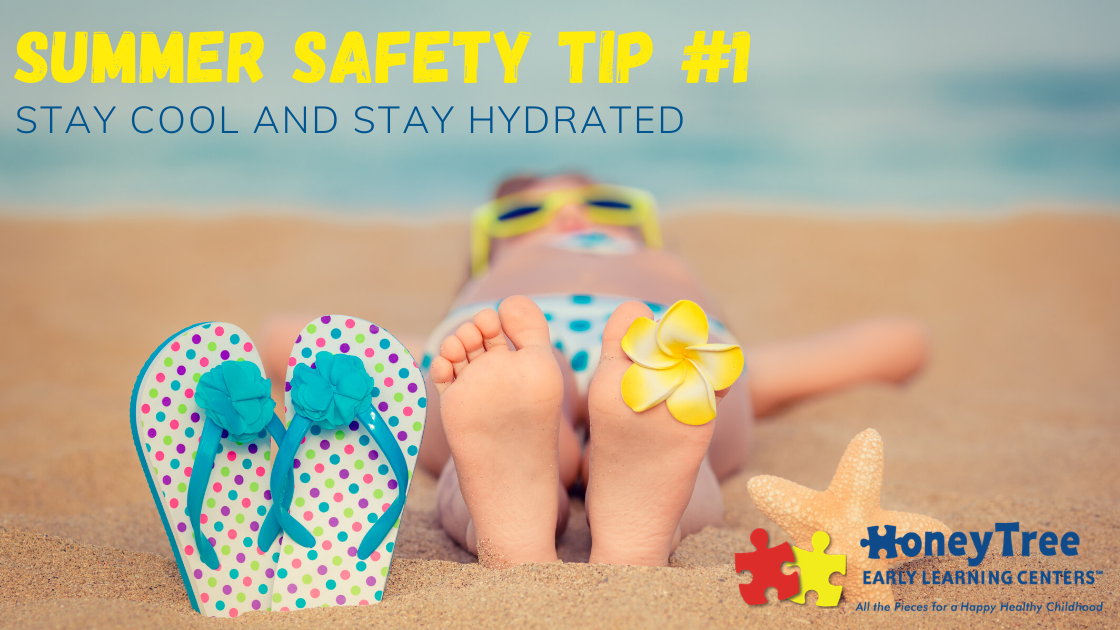By Teresa Schaeffer
Summer is finally here which means it is time to get outside, explore the great outdoors and recharge our solar batteries. Sunlight is vital to healthy growth in children. It helps the body produce vitamin D which is necessary to absorb minerals essential to growth, development, and a healthy immune system. It helps the body take in calcium from the foods we eat and reduces the risk of infectious disease by turning on key peptides in your immune system that trigger a stronger immune response.
Being outdoors and spending time in the sun is an important part of a healthy childhood. But before you hit the local playground or send the kids outside to play, take a few minutes to consider summer’s unique safety challenges. The days are longer, hotter, more humid and infants and children are not able to regulate their body temperature as well as adults do. Before you send the kids out to play in the sun, learn how to protect your child against the dangers of heat and dehydration.
Kids are at higher risk of heat related illnesses because they have a larger surface area in comparison to their total weight. They also tend to be less aware of the risks the heat brings when they are playing and having fun. Our bodies create a lot of heat and as the temperature rises, our body produces sweat to stay cool. When your body can not cool itself, your temperature rises, and you can become seriously ill. In very hot and humid weather, children can quickly lose fluids through sweating which can lead to dehydration. Dehydration and hot temperatures can cause their natural cooling system to break down and allow the heat in the body to build to dangerous levels. This can cause heat related illnesses such as heat cramps, heat exhaustion and heatstroke.
Prevention of dehydration and heat related illnesses is very important when temperatures rise. When spending time outdoors:
- Wear loose, lightweight clothing to help stay cooler longer.
- Teach your child to take frequent breaks and to drink cool water before, during and after heat and sun exposure.
- Be aware that thirst is not an accurate measure of hydration so be sure children drink water even if they don’t feel thirsty.
- Keep a water bottle handy to make hydration easy and enjoy hydrating foods such as cucumbers, melons, strawberries, peppers, oranges or celery as often as possible while avoiding excess sugar and caffeine which can be dehydrating.
- Keep children indoors or limit time outside during the middle of the day and during peak sun hours.
- Do not place a towel or blanket over a car seat or stroller because it reduces air flow and can cause an infant or toddler to overheat quickly.
Heat-related illnesses occur when you or your child’s body can’t keep itself cool. Heat cramps are an early sign of heat illness. They are often caused by extreme heat combined with not drinking enough fluids. Heat cramps typically occur in the legs (calf or thigh muscles) or stomach but can also occur as a tightness or spasms in the hands. After rehydrating and cooling down, your child should feel better and symptoms should subside.
Heat exhaustion is more severe than heat cramps and happens when the body temperature starts to elevate. Heat exhaustion can occur with or without muscle cramps. It is important to recognize and treat heat exhaustion quickly because it can progress to heat stroke. Symptoms can include hot flushed skin, profuse sweating, headache, nausea, dizziness, weakness or fainting. Symptoms should be treated immediately with fluids and rest in a cool place. Children with heat exhaustion typically recover quickly without long term effects.
Heat stroke can occur with heat exhaustion goes undetected or untreated and is a life-threatening emergency. Heat stroke occurs when internal temperatures reach 105°F or higher and the heat regulation center in the body stops working. The body can no longer control its temperature and it can climb unchecked. Often children with heat stroke do not sweat so you may find your child feels hot and dry to the touch. Symptoms may include confusion, fainting, seizures, severe headache, agitation, rapid heartbeat or shock. Heat stroke can cause a loss of consciousness, organ failure, brain damage or even death if not treated quickly. If you or your child start to experience any of these symptoms find a cool place, rest and be sure to hydrate. If you suspect heat stroke, call 911 or seek medical help immediately.
